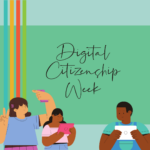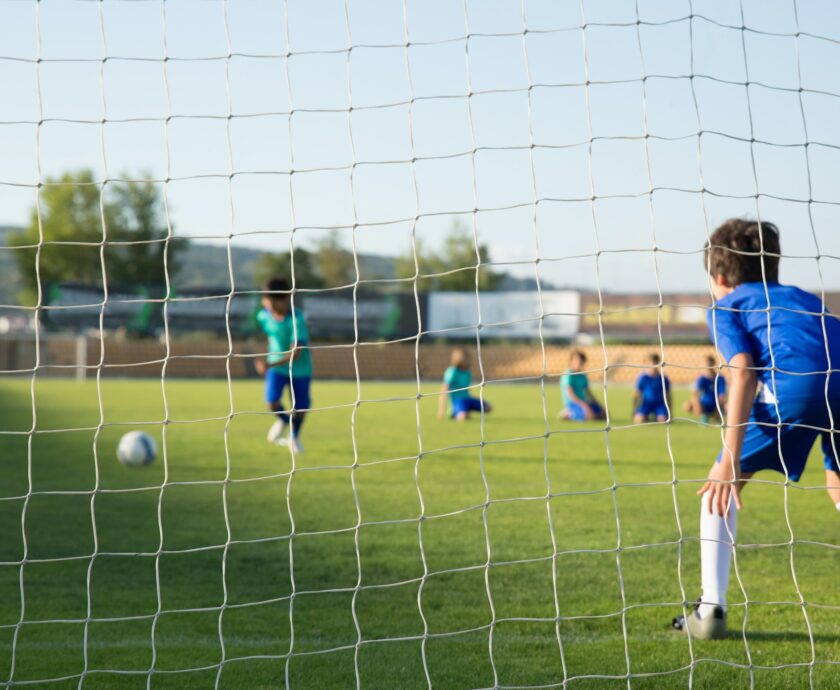National Bullying Prevention Month brings together parents, adults, and children each October to shine a light on bullying and how we can collectively put an end to it.
In partnership with The Monique Burr Foundation for Children (MBF), we have created a guide to all things bullying and how you can take part in National Stop Bullying Day and National Bullying Prevention Month. We encourage you to read this valuable guide as you do your part to prevent bullying and protect children.
Bullying is defined as repeated, negative, and hostile or aggressive behavior by one or more students with a real or perceived imbalance of power over another student for an extended period of time.
There are four different types of bullying:
- Physical – Physical bullying occurs when kids use physical actions to gain power over another. This includes hitting, kicking, damaging another person’s property, tripping and pushing.
- Verbal – Verbal bullying is the use of words, statements to gain power, belittle, and hurt another person. Verbal bullying includes name calling, teasing, insults, racial remarks, and/or verbal abuse.
- Social isolation – Social Isolation is the repeated excluding of someone from social situations on purpose, with the intent to cause harm. Some examples of social isolation include purposely excluding someone from social situations, telling other people not to be friends with another person, and embarrassing another person in a public or group setting.
- Cyberbullying – Cyberbullying is threatening, harassing, or aggressive behavior by one or more youth or teens toward another using digital technology such as the Internet or cell phone. Unlike bullying, cyberbullying does not have to be a repeated behavior nor does the behavior need to take place between persons of unequal power.
Why Adults Should Intervene
Although bullying happens frequently, children don’t often report bullying and the consequences are too great to allow it to continue unaddressed. While there is no formal system for tracking suicides related to bullying, suicide is the 4th leading cause of death in adolescents. There are many other consequences of bullying that make adult intervention essential:
- Depression
- Low self-esteem
- Anxiety
- Social isolation
- Loneliness
- Physical illness such as headaches, stomach aches
- School absenteeism and subsequently poor academic performance
- Possible violent behavior in retaliation
In other words, the consequences suffered by victims, both in the short term and long term, are too great to ignore. We can no longer hope the situation will get better on it’s own when a child is being bullied. Bullying is now recognized as a significant contributor to youth violence, including homicide, suicide, and “bullycide”, the label now applied to children who commit suicide to escape being bullied.
How Adults Should Intervene
Ignoring the bully or allowing the bullying to continue will not make it stop. Learning social skills and resistance strategies and telling safe adults who will act are important actions your child needs to understand. Teaching your child to be his or her own advocate is the best strategy for their success now and in the future. Here’s what to do if your child does disclose that they are being bullied:
- Talk to your child – ask questions and listen. Find out the details and document the events. Help your child research and practice strategies to deal with bullies effectively. Remain calm and support your child and find out more about the bullying. It’s important not to ignore the bullying or tell your child to ignore it. This sends the message that bullying is okay.
- Remind your child that the bullying is not their fault and no matter what your child does, he or she does not deserve to be bullied.
- Be cautious about telling your child to fight back as it could backfire. It is better to help them learn non-violent methods for standing up for themselves.
- Never promise kids that you will not tell the school staff if you plan to do so. If your child begs you not to talk to anyone at school about the bullying, you can say, “What is happening to you is wrong and is against the school’s rules and has to stop. We promise to do all that we can to make things better for you, not worse.” Never promise kids that you will not tell the school staff if you plan to do so.
- Become a partner with the school. If your child finds they cannot handle the bullying on their own, or if the bullying causes physical injuries, the school must become involved. Bring the bullying behaviors to the school’s attention and request a meeting with the administration, teachers, and/or counselor to brainstorm solutions and next steps together. In addition, identify a Safe Adults that your child can go to if the bullying continues or escalates, and the assurance that retaliation by both the original bully and/or his or her friends for reporting will not be tolerated.
- If your child is a target of cyberbullying, respond swiftly and appropriately, but do not take their technology away. This is a frequent response by parents in an effort to protect their child, but it is only punishing them further. Instead, help them understand it is best not to respond. You should document the cyberbullying and reach out to the school to ask for help intervening. If the school is unwilling, or if they are unsuccessful, contact law enforcement.
A Little on Polyvictimization
Polyvictimization is the exposure to multiple types of violence or victimization such as child abuse/neglect, childhood sexual abuse, bullying or cyberbullying, domestic violence, school violence, and other types of child victimization. Polyvictimization refers to experiencing different types of victimization rather than multiple episodes of the same kind of victimization. According to a national sample that examined polyvictimization of youth, as many as 1 in 5 American children are polyvictims.
Understanding and addressing polyvictimization is critical because childhood victimization is widespread, and the consequences are severe. In fact, children who experience polyvictimization are found to be at greater risk of developing mental health related consequences into adulthood such as impaired development, anxiety, depression, substance abuse, and PTSD.
Learn More About MBF
Children in the US suffer higher rates of victimization than adults, but prevention education has been shown to be an effective way to protect youth. The Monique Burr Foundation for Children (MBF) is dedicated to protecting children and teens from various types of child victimization such as bullying, child abuse, exploitation and more. MBF Prevention Education Programs are comprehensive, primary prevention programs for students and youth in grades K-12.
MBF Programs, including MBF Child Safety Matters® for elementary schools and MBF Teen Safety Matters® for middle and high schools, MBF Athlete Safety Matters® for youth athletes, and MBF After-School Safety Matters® for after-school and youth-serving organizations are comprehensive, research-based, primary prevention programs, that educate and empower students and all relevant adults with information and strategies to prevent, recognize, and respond appropriately to bullying, cyberbullying, digital dangers, trafficking, and all types of child abuse and exploitation. If you would like to learn more, please visit www.mbfpreventioneducation.org.
National Bullying Prevention Month Toolkit
MBF believes every child deserves to be safe from child victimization and wants to help schools and youth-serving organizations bring attention to bullying and promote kindness, acceptance, and inclusion. The MBF team has developed a Bullying Prevention Toolkit, a curated kit of resources to help you celebrate bullying prevention month and cultivate a culture of kindness in your school. Download the toolkit for free in honor of National Bullying Prevention Month or anytime of the year to cultivate a culture of kindness in your school and community at https://www.mbfpreventioneducation.org/mbf-bullying-prevention-toolkit/.






